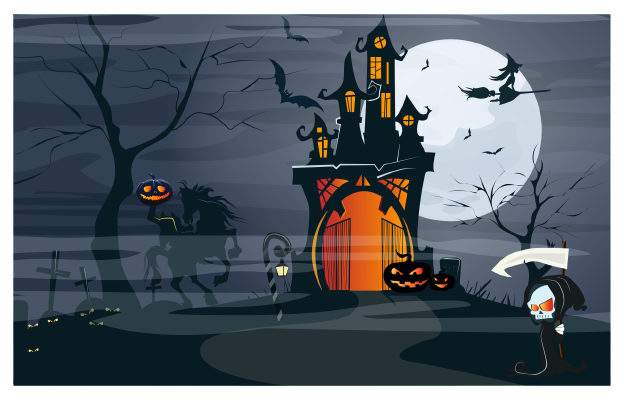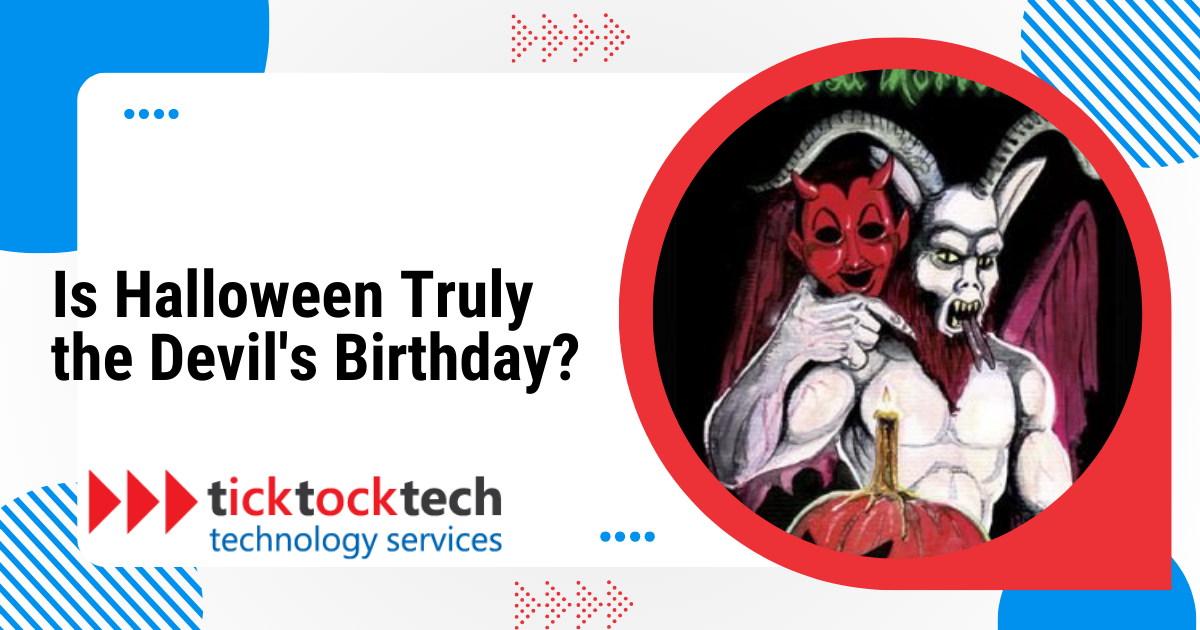Halloween is one of the most celebrated holidays, but is it the devil’s birthday?
Is it the devil’s birthday on Halloween?
No, Halloween is not the devil’s birthday, plain and simple.
On the face of it, many people associate Halloween with scary costumes and candy. But, the holiday has a complex history that is rooted in both pagan and Christian traditions. Some Christians believe that celebrating Halloween is wrong because it involves occult practices.
However, a closer look at the origins and history of Halloween suggests that the holiday is not nearly as ‘devilish’ as some people believe. In fact, Halloween is a blend of pre-existing pagan practices and Christian beliefs, just like our modern celebrations of Christmas and Easter.
This roughly translates to the fact that Halloween can be enjoyed by people of all faiths as long as they are respectful of the holiday’s history and traditions. To better help you understand the link or lack thereof between Halloween and the devil, we’ll be exploring the history of Halloween in this guide — all the way back to the beginning.
So,
What is the Origin of Halloween?
Halloween, as we know it today, has its origins in the ancient Celtic festival known as Samhain. The festival marked the end of the harvest season and the onset of winter, much like the changing of the year in the Celtic calendar, which began on November 1.

In a way, you can think of Samhain as an ancient equivalent to the New Year’s Eve ball drop in Times Square. What ties Samhain to our modern Halloween is the Celts’ belief that on the evening of October 31, the spirits of the deceased would return to the mortal realm. These wandering spirits were thought to bring misfortune by damaging crops, which was a dire concern as the British Isles faced the prospect of a long, cold, and dark winter.
On the brighter side, Celtic priests, known as Druids, believed that the presence of these spirits made it easier for them to connect with the spirit world and offer prophetic predictions. Their prophecies provided solace to the people, instilling hope during an anticipated challenging season.
During the Samhain festivities, the Celts dressed up in costumes, often using animal skins and heads, and engaged in fortune-telling. Additionally, they made offerings of crops and cattle to their deities.
When the Celts came under Roman rule in AD 43, Samhain merged with two Roman festivals. One of these Roman celebrations, called Feralia, also honored the deceased, further reinforcing the connection to spirits and the afterlife.
The other festival paid homage to the Roman goddess Pomona, symbolized by the apple. This likely laid the foundation for the autumn tradition of bobbing for apples.
Halloween’s Evolution Through Christian Influence
The early roots of Halloween were firmly planted in pagan traditions. However, its transformation into a more Christian celebration began as the Roman Empire declared itself a Christian nation during Emperor Constantine’s rule.
Under Christian governance, the Samhain festival became intertwined with Christian observances like All Souls Day and All Saints Day. These Christian holidays had traditionally taken place in the spring, but the Roman Church deliberately moved them to the end of October and early November to absorb some of the pagan customs.
All Saints Day, currently celebrated on November 1, originally commemorated Christian martyrs who suffered persecution under Roman rule. Over time, it evolved into a broader celebration of all saints, especially as Christian persecution waned within the empire.
Today, the Roman Catholic Church and various Protestant denominations like Anglicans, Lutherans, Methodists, and Reformed Christians still observe All Saints Day.
All hallow’s eve
The term “Halloween” itself is a contraction of “All Hallow’s Eve,” referring to the evening before All Saints Day, which falls on October 31. All Souls Day, occurring one day after All Saints Day is a Roman Catholic tradition for remembering “all the faithfully departed.”
According to Catholic doctrine, those who have passed away do not immediately enter heaven but go through a state of limbo to purify their souls for heaven. This belief diverges from most Protestant views, as Protestants generally hold that to be absent from the body is to be present with the Lord (2 Cor. 5:8).
Nonetheless, All Souls Day remains a significant observance for Catholics, sometimes known as the “Day of the Dead.” In Mexican tradition, people celebrate this day as Dia de los Muertos, which originates from Aztec culture and incorporates Catholic teachings.
During Dia de los Muertos, people believe that the spirits of their loved ones return to the earthly realm. Families construct altars adorned with the favorite foods and possessions of their departed loved ones. The idea is that as long as people remember them, their loved ones will forever remain a part of the community.
The American Halloween
Now, you might be wondering how we arrived at the delightful tradition of trick-or-treating. Suffice it to say that development took time, and it started as Halloween gained popularity in the United States during the 19th century.
At this time, a wave of Irish immigrants, many of whom were Catholics, brought with them a tradition of playing practical jokes on the evening of October 31. Groups of folks would wander around their neighborhoods, asking for food or money. If someone fails to provide a treat, they might receive a playful prank; hence the term “trick-or-treat.”
During this period, the custom of carving pumpkins also gained momentum. This practice had its origins in an Irish folklore tale about a fellow named Jack, who struck a deal with the Devil to protect his soul.
However, when Jack passed away, neither heaven nor hell would have him. He was left to wander eternally in darkness, carrying a hollowed-out turnip with embers inside.
Over time, people replaced the turnip with a pumpkin, giving rise to the tradition of carving pumpkins into jack-o’-lanterns.
Recession and revival
In the late 19th century, Halloween became associated with witchcraft, which led to a decrease in its popularity.
However, a revival occurred in the 1920s when communities started hosting more costume parties for Halloween. But there was a catch – vandalism was on the rise, as some harked back to the folklore of the dead returning to cause mischief.
To counteract this, the modern concept of trick-or-treating gained traction as a community-friendly and cost-effective way to celebrate while keeping an eye on the neighborhood for potential troublemakers.
With the baby boom of the 1950s and beyond, Halloween gradually transformed into a predominantly children’s holiday.
Over the years, Halloween has undeniably become more commercialized and consumer-driven, but the essence of the tradition remains a beloved and fun-filled celebration.
Final Thoughts: Is Halloween Truly The Devil’s Birthday?
Halloween is a complex holiday with a rich history. It is a time for celebration, but it is also a time for reflection. If you are celebrating Halloween this year, we encourage you to do so in a respectful way. Consider the origins of the holiday and the different traditions associated with it. Choose activities that are appropriate for you and your family. Most importantly, have fun!

